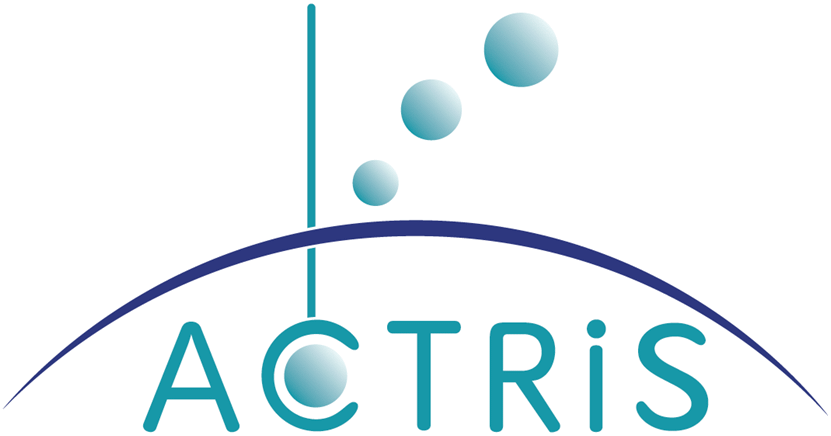Past Projects
The EU-funded FORCeS project aims to detect essential processes that influence aerosol radiative forcing and study data related to aerosols and clouds’ impacts on climate during recent decades. The project will organize workshops among leading European climate scientists and climate specialists aiming to improve European climate models. FORCeS will identify key processes governing aerosol radiative forcing, as well as climate feedbacks related to aerosols and clouds, and improve the knowledge about these processes by bringing together leading European scientists.
The Aerosol, Clouds and Trace Gases Research Infrastructure (ACTRIS) is a pan-European research infrastructure producing high-quality data and information on short-lived atmospheric constituents and on the processes leading to the variability of these constituents in natural and controlled atmospheres. Different atmospheric processes are increasingly in the focus of many societal and environmental challenges, such as air quality, health, sustainability and climate change. ACTRIS brings essential information for understanding atmospheric processes and bio-geochemical interactions between the atmosphere and ecosystems. ACTRIS is composed of Observational and Exploratory Platforms, Topical Centres, Data Centre, and Head Office that is coordinating the ACTRIS activities.
IMSAP
The need to identify and characterize organic pollution require the development of sensors and technologies of high specifications and specialized targeting. The Innovative Integrated Mass Spectrometry Sensor System for Characterization of Atmospheric Pollutants (IMSAP) project aims to the evolution of a prototype analytical device for the characterization of organic air pollution. The innovative and prototype device will be able to respond to current research developments and market needs and will be a unique instrument, with high standards in the mass spectrometry market.
PANACEA
The Pan-Hellenic Infrastructure for the Study of Atmospheric Composition and Climate Change (PANACEA) is the only integrated Research Infrastructure (RI) for atmospheric composition and climate change, not only for Greece, but for all of Southern Europe and the Eastern Mediterranean, an area that has been identified as extremely sensitive for climate change. The project covers the need for the observation and supervision of atmospheric composition, changes in solar radiation, climate change and related natural hazards in Greece. In addition, it pioneers the provision of services in sectors of the economy affected by air pollution and climate change. PANACEA aims to act as a critical point for the next generation of researchers in environmental sciences, to attract promising young researchers to research and industry and to be a bridge between science, industry and entrepreneurship.
aims at further integrating the most advanced European atmospheric simulation chambers into a world-class infrastructure for research and innovation. The project is composed by a coordinated set of networking activities, which deliver improved chamber operability across the infrastructure, as well as standard protocols for data generation and analysis. Trans-national access is provided to sixteen different chambers and four calibration centres, becoming the core of the project. Joint research activities enhance the capability of the infrastructure to provide improved services for users. Cooperation with the private sector a fundamental pillar of the project, and it is necessary to exploit the innovation potential of the infrastructure by supporting development of scientific instruments, sensor technologies and de-polluting materials. Overall, EUROCHAMP-2020 has the goal to significantly enhance the capacity for exploring atmospheric processes and ensure that Europe retains its place in atmospheric simulation chamber research.
ATMOPACS (Atmospheric Organic Particulate Matter, Air Quality and Climate Change Studies) is proposing an innovative new approach for the description of OA in both chemical transport and climate models that will be able to overcome the challenges posed by the chemical complexity of OA while capturing its essential features. The proposed framework is based on the two-dimensional representation of the OA in the volatility oxygen content“coordinate system.
The Pan-European Gas-AeroSOls-climate interaction Study (PEGASOS). This European large scale integrating project brings together most of the leading European research groups, with state-of the-art observational and modeling facilities, to quantify the magnitude of regional to global feedbacks between atmospheric chemistry and a changing climate and to reduce the corresponding uncertainty of the major ones. Also PEGASOS aim is to identify mitigation strategies and policies to improve air quality while limiting their impact on climate change.
The MEGAPOLI project brings together leading European research groups, state-of-the-art scientific tools and keay players from third countries to investigate the interactions among megacities, air quality and climate. MEGAPOLI will bridge the spatial and temporal scales that connect local emissions, air quality and weather with global atmospheric chemistry and climate.

EUCAARI
The European Integrated project on Aerosol Cloud Climate and Air Quality Interactions, EUCAARI, brings together the leading European research groups, state-of-the-art infrastructure and key players from third countries to investigate the role of aerosol on climate and air quality.

ROMANDE
Τα νανοσωματίδια εμφανίζονται στην ατμόσφαιρα, είτε με την απευθείας εκπομπή τους (πρωτογενή σωματίδια) είτε μέσω της πυρηνογέννεσης (δευτερογενή σωματίδια). Η πυρηνογέννεση είναι μια διεργασία η οποία δημιουργεί καινούργια σωματίδια, της τάξης του ενός νανομέτρου, στην ατμόσφαιρα από υπερκορεσμένα αέρια. Τα αέρια που μπορούν να συνεισφέρουν στην πυρηνογέννεση μπορεί να είναι είτε ανόργανης φύσεως, όπως το θειικό οξύ (Η2SO4) και η αμμωνία (NH3), είτε οργανικής φύσεως, όπως διάφοροι οξυγονωμένοι υδρογονάνθρακες ή οργανικές αμίνες. Παρόλη τη επιστημονική προσπάθεια των τελευταίων δεκαετιών είναι ακόμα σχετικά άγνωστο το ποια αέρια συνεισφέρουν σημαντικά στην δημιουργία νεοσύστατων σωματιδίων στην ατμόσφαιρα. Επιπρόσθετα, ο ρόλος των πρωτογενών εκπομπών σωματιδίων, από δραστηριότητες όπως τα μέσα μεταφοράς, η καύση βιομάζας, οι βιομηχανίες και άλλες πηγές καύσης, στη συνολική συγκέντρωση αριθμού των σωματιδίων είναι ακόμα αβέβαιος.
Το ερευνητικό πρόγραμμα ROMANDE στοχεύει να απαντήσει σε καίρια ερωτήματα που αφορούν τις πηγές αλλά και την ανάπτυξη των ατμοσφαιρικών σωματιδίων όπως:
(α) Ανάπτυξη. Εκτός από το θειικό οξύ, ποιες άλλες ατμοσφαιρικές ενώσεις συνεισφέρουν στην ανάπτυξη των νέων ατμοσφαιρικών σωματιδίων; Ποιο είναι το μέγεθος της συνεισφοράς τους; Μπορούν η αμμωνία και οι αμίνες να βοηθήσουν μετά από αντίδραση με οργανικά αέρια;
(β) Ρόλος των δευτερογενών οργανικών αερίων. Ποια είναι η πτητικότητα των λιγότερο πτητικών προϊόντων των πιο σημαντικών οργανικών προδρόμων ενώσεων και των επόμενων προϊόντων τους; Μπορούν αυτές οι δευτερογενείς οργανικές ενώσεις να βοηθήσουν στην ανάπτυξη των μόλις δημιουργηθέντων νανοσωματιδίων;
(γ) Προσομοίωση. Μπορούν τα τρισδιάστατα μοντέλα χημικής μεταφοράς να αναπαράγουν τις μετρήσεις συγκεντρώσεων και κατανομών μεγέθους των νανοσωματιδίων σε διαφορετικές περιοχές και μετεωρολογικές συνθήκες;
(δ) Πηγές νανοσωματιδίων. Ποια είναι η σχετική σημασία των πρωτογενών εκπομπών και της πυρηνογέννεσης για την συνολική συγκέντρωση αριθμού και την συγκέντρωση CCN; Ποιο κλάσμα αυτών των σωματιδίων είναι ανθρωπογενές;





